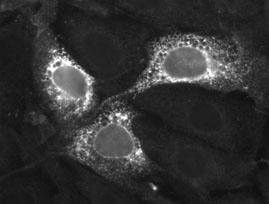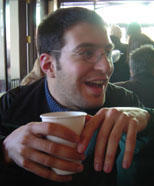Public understanding of Science
While scientific literacy has doubled over the past two decades, only 20 to
25 percent of Americans are "scientifically savvy and alert," he said in an
interview. Most of the rest "don't have a clue."
I then researched some of Dr Miller's research in
Miller, JD, Public understanding of, and attitudes toward,scientific research: what we know and what we need to know. Public Understand. Sci. 13 (2004) 273-294
There are many interesting facts in this article. In this article he defines "the level of understanding needed for scientific literacy to be sufficient to read and comprehend the Tuesday science section of The New York Times." Interesting! Maybe that's why they wrote an article about him.
Anyway ...
On understanding the meaning of scientific study (using experiments to test hypothesis):
Looking at the pattern over the last four decades, the percentage of US adults with a minimal level of understanding of the meaning of scientific study has increased from 12 percent in 1957 to 21 percent in 1999.
So then do Americans understand experimentation (have two experimental set ups where one variable is changed between the test experiment and the control experiment):
the percentage of US adults who understand the basic idea of an experiment has increased from approximately 22 percent in 1993 to 35 percent in 1999
Now facts:
-only 13% of Americans could describe what a molecule was
-on space "Fifty-five percent of adults responded correctly to the question 'Would you say that the Sun is a planet, a star, or something else?' Only 24 percent of adults knew that the size of the universe is expanding."
-only half knew that the earth rotates around the sun once a year (one fifth think that the SUN ROTATES AROUND THE EARTH, and 14% think that the earth rotates around the sun EACH DAY)
-only 11% understand the process of radioactive decay (the release of high energy particles during nuclear fission)
-on DNA "Studies of US adults over the last decade have found that about 40 percent have a minimally correct explanation of the meaning of DNA (NSB, 2000). In 1990, approximately 24 percent of US adults were able to provide an explanation of DNA that included its role in heredity."
-on genes "10 percent of US adults think that ordinary tomatoes do not contain genes and 45 percent do not know."
So if the average American doesn't know much, does that mean he does not support scientific research? No.
A substantial body of research from the end of World War II to the present indicates that an overwhelming majority of US adults are interested in science and technology, believe that it has contributed to our standard of living, and are willing to support it with government funding.
...
By the end of the twentieth century, only 14 percent of US adults thought that the government was spending too much on scientific research
So people ARE interested and supportive - so what is the problem?
The people who are Science literate (see definition above) are those people that took University level science courses.
Although some university science faculties view general education requirements with disdain, these analyses indicate that the courses promote civic scientific literacy among US adults despite the disappointing performance of US high school students in international testing.
So as I've commented on before American high schools are just not doing a good enough job. But here is the real surprise:
The US is the only major nation in the world that requires general education courses for its university graduates. University graduates in Europe or Japan can earn a degree in the humanities or social sciences without taking any science course at the university level. In cross-national studies, a slightly higher proportion of US adults qualify as scientifically literate than do adults in the European Union or Japan, and comparative structural equation analyses of those data show that this exposure to college-level science courses accounts for the US performance (Miller et al., 1997; Miller and Pardo, 2000).
So around the world - pre-university exposure to science is INADEQUATE. In addition outside the US, university exposure to science is also inadequate. This should be a wake-up call not only for the US, but everywhere!
The last paragraph of the article:
Finally, it is clear that the best long-term strategy for increasing civic scientific literacy is to improve pre-collegiate education so that all students who graduate from college are scientifically literate. The fact that college-level science courses are currently able to compensate in part for inadequate middle school and high school science should be of little consolation to the scientific community. A slightly higher proportion of US adults might qualify as more scientifically literate than European or Japanese adults, but the truth is that no major industrial nation in the world today has a sufficient number of scientifically literate adults. No pride can be taken in a finding that four out of five Americans cannot read and understand the science section of The New York Times.






